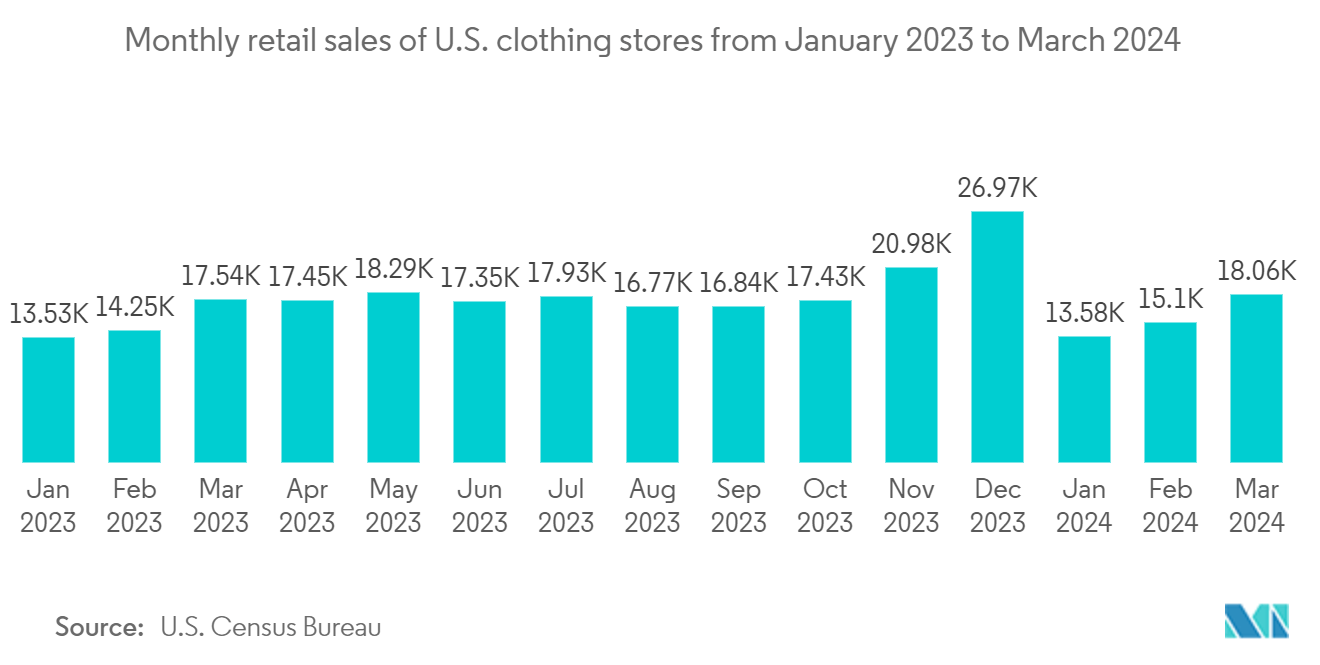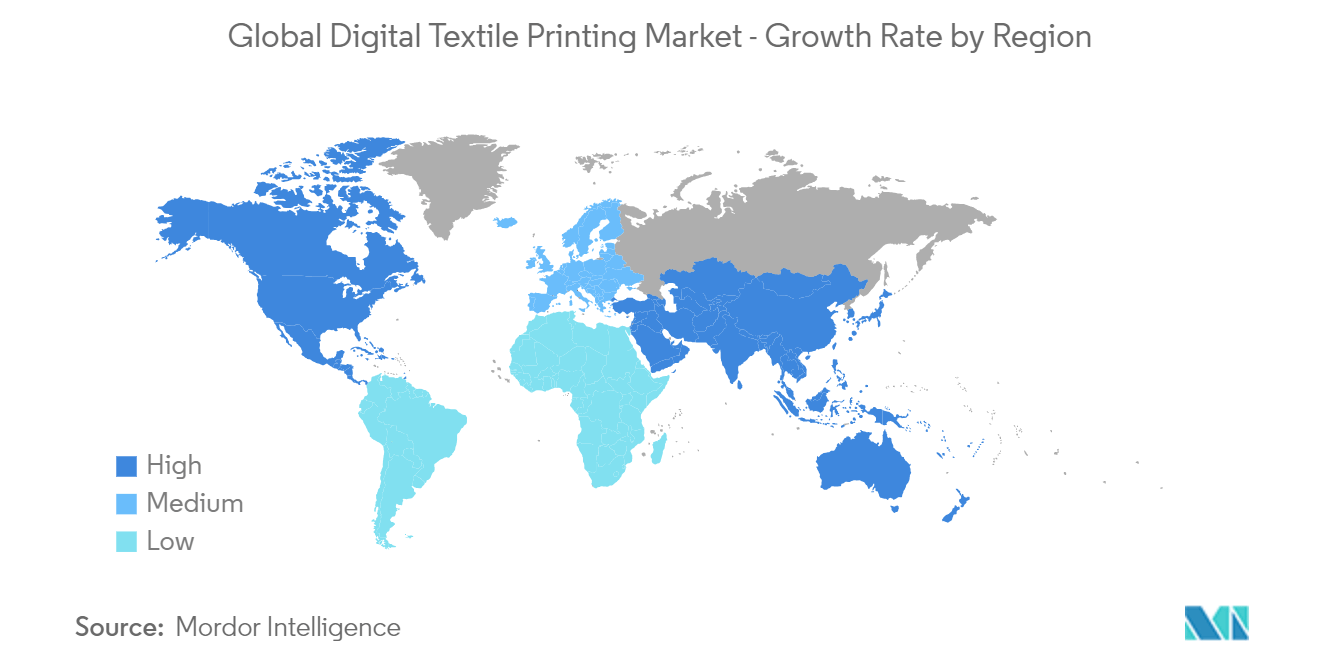Market Trends of Digital Textile Printing Industry
The Garment and Apparel Segment is Expected to Hold Significant Share in the Market
- Since its inception, garment and clothing printing techniques have advanced significantly. The most recent printing method for apparel and accessories is digital textile printing. Digital fabric printing transfers designs or images kept in a digital format into the fabric using computer-controlled printers. Designers and makers may produce complex patterns quickly and simply due to technology.
- The market for textile printing has traditionally placed a high priority on sustainability and textile waste. According to the United Nations, the fashion industry is heavily reliant on digital technology, which contributes approximately 10% of global greenhouse gas emissions.
- Due to shifting the textile design process domestically, digital textile printing has increased the speed of production and lowered shipping expenses, which enables designers to make smaller fabric test runs and waste less while finalizing the fabric, which also reduces excessive waste in the design process.
- Moreover, with cutting-edge digital textile printing technology, most digital textile printing businesses in China have begun to build advanced digital textile printing equipment in response to the demand for limitless color combinations and color accuracy.
- Furthermore, demand for digital textile printing solutions in the garment and apparel segment is expected to be anticipated to increase due to changing consumer behavior, increased urbanization, faster adaptability, shorter life cycles of fashion designs, and higher disposable income during the forecast period.

Asia-Pacific is Expected to Witness the Highest Growth
- Asia-Pacific, driven by its numerous textile hubs, is poised to lead global growth. China and India stand out as the region's primary market drivers, with Vietnam and Bangladesh emerging as key players in the textile landscape.
- China and India, known for their competitive labor costs, have witnessed a surge in textile industry expansion, propelling the market's growth in the region. China, a textile powerhouse for decades, is now focusing on enhancing its capabilities, investing in advanced technologies like shuttle-less looms to elevate fabric quality.
- Polyester has emerged as the go-to fabric for sublimation ink, especially in the fashion realm, owing to its attributes such as wrinkle and abrasion resistance and cost-effectiveness. While silk remains a coveted choice for apparel and home decor, premium pricing limits its widespread adoption in the region, with Japan and Gulf nations leading in demand for silk textiles.
- Digital textile printing and dye-sublimation technologies have revolutionized the textile production landscape, carving out new, lucrative market niches. This evolution has benefitted large format textile printers and print service providers, opening up avenues in soft signage for buildings, retail displays, and other commercial settings. The expanding fashion industry, coupled with these advancements, is set to fuel the market’s growth in the region.


